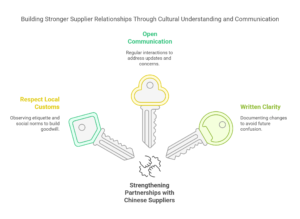Patent analytics is a powerful tool that can provide valuable insights for companies looking to file patents internationally. It involves the analysis of patent data to gain a deeper understanding of the patent landscape, identify potential competitors, assess patentability and infringement risks, optimize filing strategies for different jurisdictions, manage patent portfolios, and identify potential partnerships and collaborations. By leveraging patent analytics, companies can make informed decisions about where and when to file patents internationally, reducing risks and costs associated with international filing without proper analysis.
Table of Contents
ToggleKey Takeaways
- Patent analytics can help companies make informed decisions about international filing strategies.
- Analyzing the patent landscape can help companies identify potential competitors and market trends.
- Patent analytics can also be used to identify patentability and infringement risks.
- Different jurisdictions may require different filing strategies, which can be optimized using patent analytics.
- Effective use of patent analytics requires best practices and may involve artificial intelligence and machine learning.
The Importance of Patent Analytics in International Filing Strategies
When it comes to international filing strategies, companies need to carefully consider various factors such as market potential, competition, patentability, infringement risks, and jurisdiction-specific requirements. Without proper analysis, companies may end up wasting resources on filing patents in jurisdictions where there is little market potential or facing infringement risks due to inadequate patent searches.
Patent analytics can help companies make informed decisions about where and when to file patents internationally. By analyzing the patent landscape, companies can identify potential competitors and market trends, allowing them to strategically position their patents in jurisdictions with high market potential. Additionally, patent analytics can help companies assess patentability and infringement risks by analyzing prior art and existing patents in the relevant technology area. This information can guide companies in making decisions about whether to proceed with filing a patent or modify their invention to avoid potential infringement issues.
Analyzing Patent Landscape for Effective International Filing
One of the key aspects of patent analytics is analyzing the patent landscape. This involves studying the existing patents in a particular technology area to gain insights into the competitive landscape and market trends. By conducting a comprehensive patent landscape analysis, companies can identify potential competitors and understand their patent portfolios. This information can help companies assess the strength of their own inventions and make informed decisions about where to file patents internationally.
Furthermore, analyzing the patent landscape can provide valuable insights into market trends. By studying the patents filed in a specific technology area, companies can identify emerging technologies, market gaps, and potential areas for innovation. This information can guide companies in developing their international filing strategies by focusing on jurisdictions where there is a high demand for their technology or where there are opportunities for new inventions.
Leveraging Patent Analytics for Identifying Competitors and Market Trends
Patent analytics can help companies identify potential competitors and market trends by analyzing patent data. By studying the patents filed by competitors, companies can gain insights into their patent portfolios, technology focus, and market strategies. This information can help companies assess the strength of their own inventions and make informed decisions about where to file patents internationally.
Additionally, patent analytics can provide valuable insights into market trends. By analyzing the patents filed in a specific technology area, companies can identify emerging technologies, market gaps, and potential areas for innovation. This information can guide companies in developing their international filing strategies by focusing on jurisdictions where there is a high demand for their technology or where there are opportunities for new inventions.
Patent Analytics for Identifying Patentability and Infringement Risks
Another important aspect of patent analytics is assessing patentability and infringement risks. By analyzing prior art and existing patents in the relevant technology area, companies can determine the novelty and inventiveness of their inventions. This information is crucial for making decisions about whether to proceed with filing a patent or modify the invention to avoid potential infringement issues.
Furthermore, patent analytics can help companies assess infringement risks by analyzing existing patents in the relevant technology area. By studying the claims of existing patents, companies can identify potential infringement risks and make informed decisions about whether to proceed with filing a patent or modify their invention to avoid potential infringement issues.
Using Patent Analytics to Optimize Filing Strategies for Different Jurisdictions

One of the challenges of international filing is optimizing filing strategies for different jurisdictions. Each jurisdiction has its own set of requirements, procedures, and timelines for patent filing. By leveraging patent analytics, companies can optimize their filing strategies by understanding the specific requirements and procedures of each jurisdiction.
Patent analytics can provide valuable insights into the patent filing trends and practices of different jurisdictions. By analyzing the patent data from different jurisdictions, companies can identify the most suitable jurisdictions for filing their patents based on factors such as market potential, competition, and legal protection. This information can guide companies in developing their international filing strategies and help them allocate their resources effectively.
Analyzing Patent Data for Effective Portfolio Management and Licensing Strategies
Patent analytics can also help companies manage their patent portfolios and develop licensing strategies. By analyzing the patent data, companies can gain insights into the strength and value of their patents, identify potential licensing opportunities, and make informed decisions about portfolio management.
By studying the patents filed by competitors, companies can identify potential licensing opportunities. This information can help companies monetize their patents by licensing them to other companies operating in related industries or jurisdictions.
Patent Analytics for Identifying Potential Partnerships and Collaborations
In addition to managing patent portfolios, patent analytics can also help companies identify potential partnerships and collaborations. By analyzing the patent data, companies can identify other players in the industry who are working on similar technologies or have complementary inventions. This information can help companies identify potential partners for joint research and development projects or collaborations for commercialization.
By leveraging patent analytics, companies can identify potential partners who have strong patent portfolios in relevant technology areas. This information can guide companies in developing their international filing strategies by focusing on jurisdictions where there are potential partners who can provide valuable expertise or resources.
The Role of Artificial Intelligence and Machine Learning in Patent Analytics
Artificial intelligence (AI) and machine learning (ML) technologies are revolutionizing the field of patent analytics. These technologies can analyze large volumes of patent data quickly and accurately, providing valuable insights for international filing strategies.
AI and ML can enhance patent analytics by automating the process of analyzing patent data, identifying patterns and trends, and making predictions. By leveraging these technologies, companies can gain deeper insights into the patent landscape, identify potential competitors and market trends, assess patentability and infringement risks, optimize filing strategies for different jurisdictions, manage patent portfolios, and identify potential partnerships and collaborations.
Best Practices for Effective Use of Patent Analytics in Strategic International Filing
To effectively use patent analytics in strategic international filing, companies should follow some best practices:
1. Start early: Companies should start analyzing the patent landscape and conducting patent searches as early as possible in the invention process. This will help them identify potential competitors, assess patentability and infringement risks, and make informed decisions about where and when to file patents internationally.
2. Use a comprehensive approach: Companies should use a comprehensive approach to patent analytics by analyzing various sources of patent data, including patent databases, scientific literature, and industry reports. This will provide a more complete picture of the patent landscape and market trends.
3. Leverage AI and ML technologies: Companies should leverage AI and ML technologies to enhance their patent analytics capabilities. These technologies can analyze large volumes of patent data quickly and accurately, providing valuable insights for international filing strategies.
4. Collaborate with experts: Companies should collaborate with experts in the field of patent analytics to gain deeper insights into the patent landscape, identify potential competitors and market trends, assess patentability and infringement risks, optimize filing strategies for different jurisdictions, manage patent portfolios, and identify potential partnerships and collaborations.
In conclusion, patent analytics is a powerful tool that can provide valuable insights for companies looking to file patents internationally. By leveraging patent analytics, companies can make informed decisions about where and when to file patents internationally, reducing risks and costs associated with international filing without proper analysis. Patent analytics can help companies analyze the patent landscape, identify potential competitors and market trends, assess patentability and infringement risks, optimize filing strategies for different jurisdictions, manage patent portfolios, and identify potential partnerships and collaborations. By incorporating patent analytics into their international filing strategies, companies can enhance their chances of success in the global marketplace.
For more information on the effective use of patent analytics for strategic international filing, check out this related article on “The Chinese Manufacturing Landscape: Why Rapid Patent Protection is a Must.” This article explores the importance of securing patent protection in China’s competitive manufacturing landscape and highlights the strategic advantages it can provide for businesses. Understanding the patent landscape and leveraging patent analytics can help companies make informed decisions when it comes to international filing strategies.
Contact us if you need help with drafting of contracts that follows Chinese laws and are enforceable in China, background investigation of Chinese companies, protecting patents, trademarks, verification of contracts to the law in China, or help with other legal challenges that you have in China.
If you require our assistance or have further questions about our services, please do not hesitate to contact our Customer Relationship Managers Jan Erik Christensen, at janerik@ncbhub.com or Milla Chen, at huimin.chen@ncbhub.com. We look forward to hearing from you and helping your business succeed in China.








